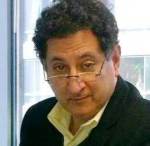Updated
Business Brief: Sources See Positive 2017 Growth in Morocco and Renewable Energy Project in the Headlines – Jean R. AbiNader
Morocco continues to receive positive news about its 2017 economic prospects and gains international attention for its renewable energy projects, internet penetration, and regional economic leadership.
Working Hard to Succeed. The North Africa Post elaborated on a report on Proshare, an African economic intelligence wire, which noted Morocco’s positive outlook for 2017. Proshare based its prediction of a 4.3% GDP growth on several factors: recovery in the agricultural sector from the disastrous drought in 2016, “sustained efforts to improve the business environment and political stability [that] will continue to boost investor sentiment, which bodes well for the kingdom’s ambitions to become a manufacturing and exporting hub between Europe and Africa.”
The North Africa Post article opined that the steps Morocco has been taking will ensure its continued strong economic performance in the region. It pointed out that Morocco’s strong manufacturing sector is a cause for optimism as it continues expansion and exports. At the same time, the piece cautioned that the tourism industry, which is growing more slowly than predicted, “Severely suffered from the regional security turmoil affecting the MENA region.” However, it points out that the sector is in recovery mode this year with an uptick in visitors from Russia and China, key targets on King Mohammed VI’s economic diplomacy outside of Africa. In fact, most tourism receipts have recovered, and the restaurant and hotel sector expanded 9.6% in real terms in Q4’16.
North Africa Post.com also carried a story reporting that Morocco is now ranked “the second most connected country in Africa and the 33rd globally in a study by the Internet Live Stats website.” With more than 20 million users in a country of some 35 million people, the penetration rate is 57.6%, second to the Seychelles with 57.9%” with a population of 97,000! This puts Morocco far ahead of fellow Maghreb countries Algeria – 19.7% penetration and more than 39 million people — and Tunisia — 48.1% penetration in a population of 11 million.
Live Internet Stats said that around 40% of the world population has an internet connection today, compared to 1% in 1995. The number of internet users has increased tenfold from 1999 to 2013. The first billion was reached in 2005; the second billion in 2010; and the third billion in 2014.
Renewable energy projects continue to draw attention, as Morocco will soon launch the world’s largest renewable energy power desalination plant for both drinking water and irrigation. As previously noted in Business Brief, the first phase of the $350+ million project was initiated with Abengoa, an international firm specializing in innovative and sustainable technology solutions in the energy and environmental sectors. The project will be in the Agadir region in partnership with the National Office of Electricity and Potable Water (ONEE) and BMCE Bank.
The plant will have a daily output capacity of 275,000 cubic meters of desalinated water, the largest ever for drinking water and irrigation. It can later be expanded to 450,000 m3 per day. The plant can be operated on wind power and critically protects existing underground aquifers from overuse.
Dreaming about Rugs. Raised in a francophone home, Abby Delaney from Winchester VA, near Washington, DC, found it natural to be involved in international business. Returning to Boston after a two-year stint overseas, she wondered what would come next, until a friend mentioned that he was starting a Moroccan Berber (Amazigh) rug company.
According to the article, “Oum Rugs was created by Ismail Tazi and his mother in March 2017. The stated mission, according to the company website, is to make authentic, one-of-a-kind, handwoven Moroccan Berber rugs more accessible to the world market, while also empowering the women who weave them. Oum, which means ‘mother’ in Arabic, pays homage to the Berber women who design and create the Moroccan rugs.”
Fluent in French, DeLaney has been a key player in building ties with weavers in Morocco and promoting their work over the internet. Having worked for an international company, she dove in and started the business end of the company in the US, creating the website, handling logistics and customer service, and coordinating rug production with Tazi and his mother as they traveled across Morocco finding the weavers.
DeLaney emphasizes that women weavers see their product as service items whereas overseas they are regarded as works of art. She says that “In the regions of Morocco where the rugs are made, young people don’t have access to formal education, only to the skills that are handed down. Oum’s method of compensation will allow parents to give their children a choice in their future.” She sees her efforts as part of a larger mission to satisfy demands for weaving as art while enabling the weavers to build futures for their families.
